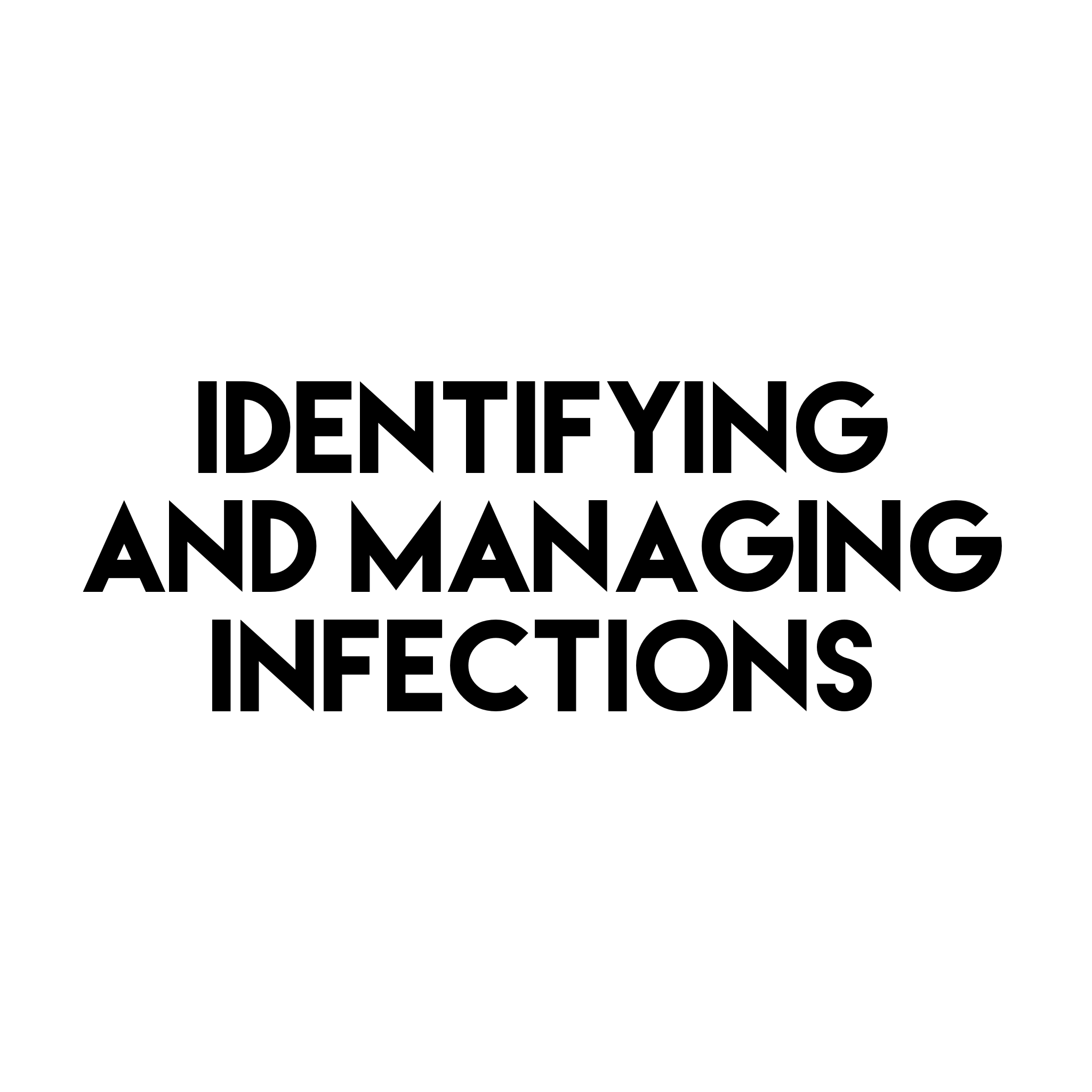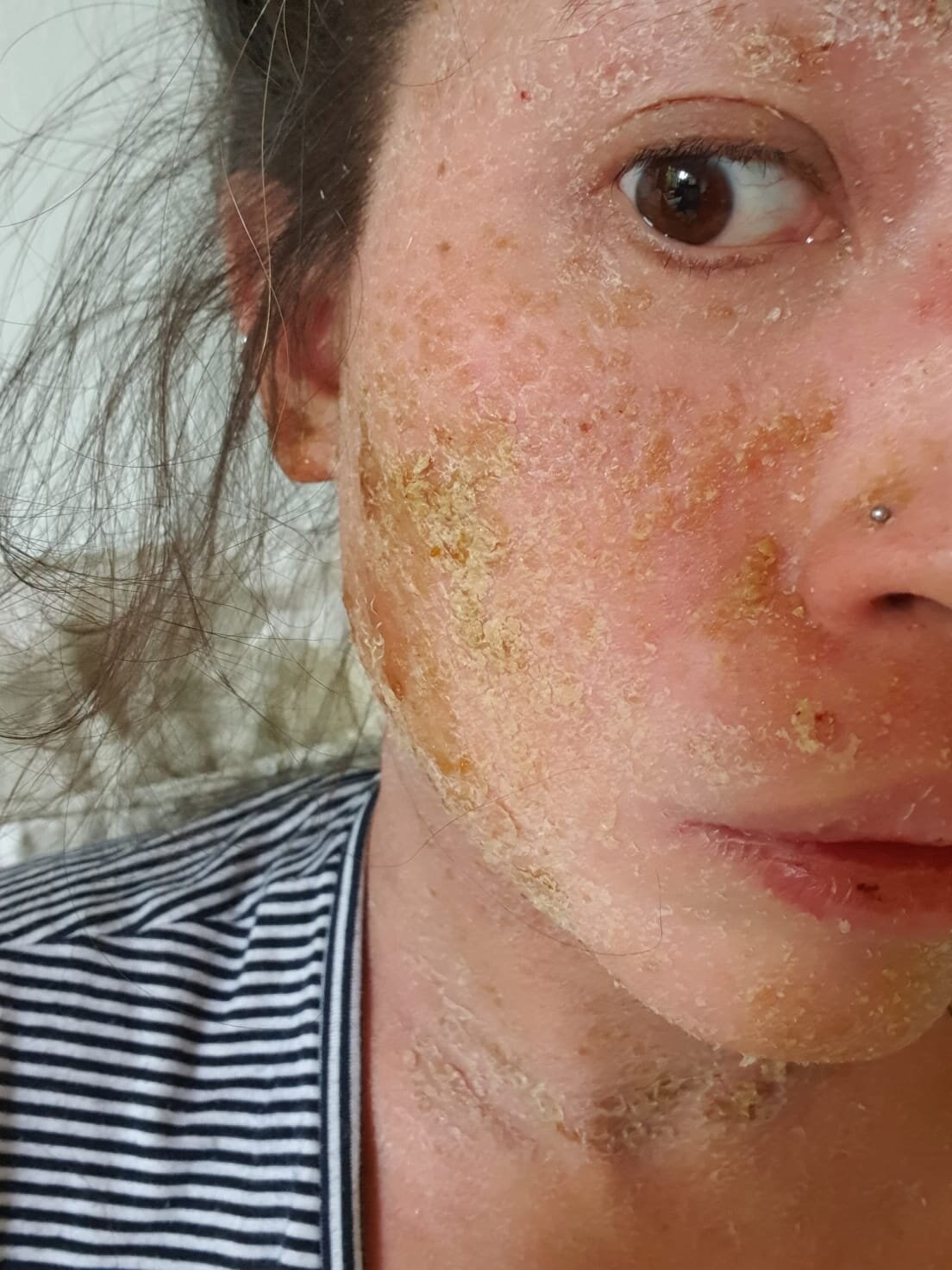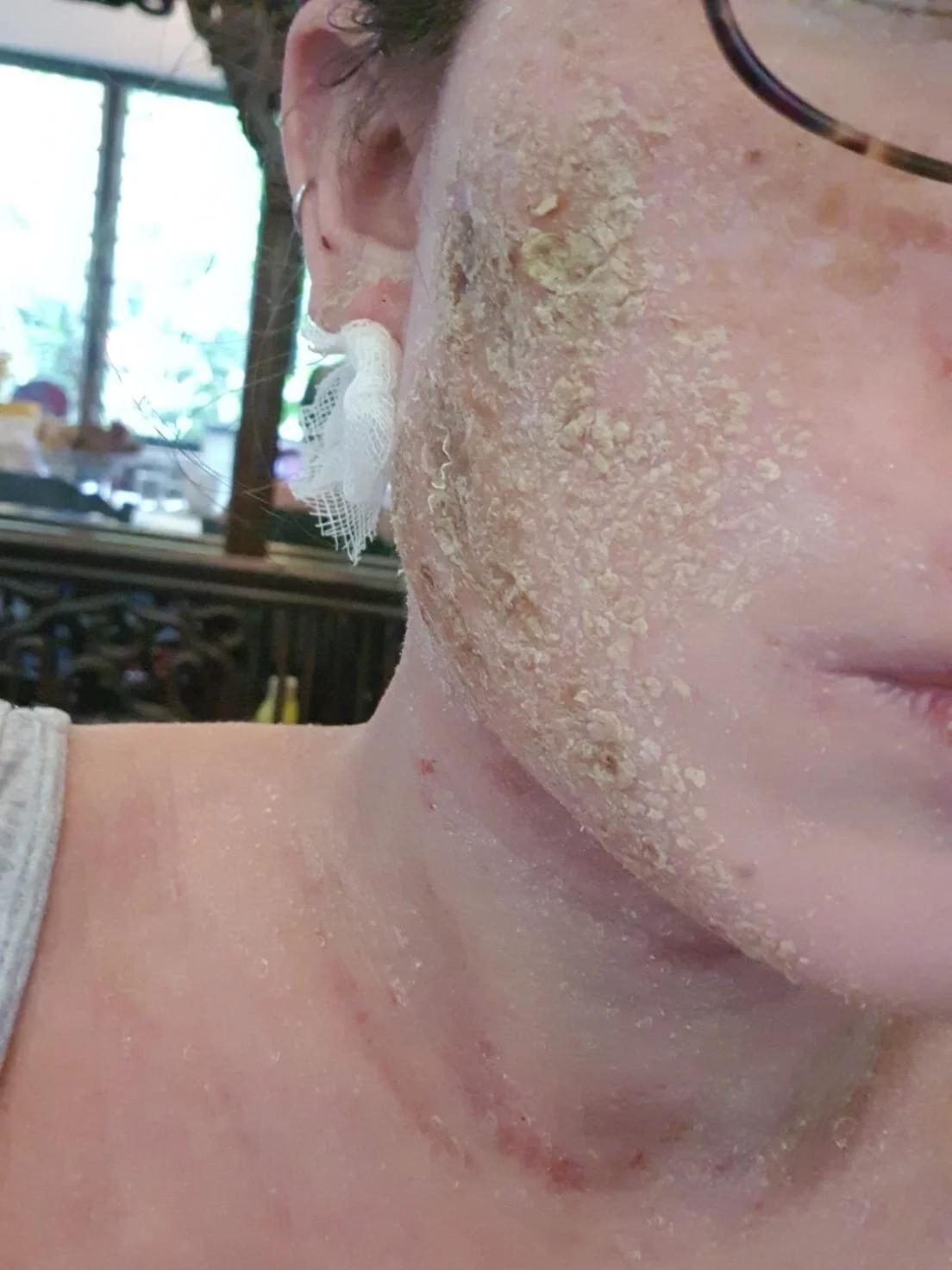Identifying and dealing with bacteria infections
Disclaimer: I am not a medical professional, this is not intended to replace medical advice. Please seek help from your doctor if you suspect an infection or if you are unwell.
It is tricky isn’t it, trying to figure out if your oozy spot is an infection or simply oozing from high potency topical steroid usage.
It is extremely important to identify and treat infections promptly. Many with TSW go with infections untreated for months and even years. This suffering could have been cut short with proper care and treatment.
NMT and Infection Treatment
It is particularly important to be vigilant of infections when you are doing No Moisturizing Treatment. This is emphasised by Dr Sato and Tokuko in her blog about NMT, but is often overlooked by people doing NMT on their own at home. For this reason, it is recommended that NMT be done with the guidance of a medical professional, but many are 1) distrustful of medical professionals 2) most medical professionals are not trained in NMT. Therefore please educate yourselves well before embarking on NMT.
NMT requires infrequent showering, which can cause a build up of bacteria on the skin surface. Showers are recommended once every 3-4 days for this purpose. But many on NMT take no showering to an extreme (no showering for months or even a year) and mistake infections for the ooze crusting process. Dr Sato also stresses taking antibiotics to treat infections. It is extremely pertinent to overcome the fear of medication and see past misconceptions about antibiotics so that you can treat your skin.
Identifying an infection
Here are some tips on differentiating between infection and oozy skin:
Colour of ooze
Ooze: Oozing is clear or slightly yellow, not thick or cloudy. When dried up, ooze forms scabs that resemble skin.
Infection: Ooze/pus from infection can be yellow/orange, thick, and cloudy. When dried, it crystallises instead of forms scabs.
Both oozing and infection can erupt from bubbles. The difference is that oozing from bubbles is usually clear, while infection pus from bubbles are cloudy/milky yellow.
2. Smell
Ooze: Smells metallic and/or sour, when weeping can smell like body odour
Infection: Smells like rot, smell is also more intense
3. Presence of other symptoms
While some of these symptoms accompany infections, do note that is it NOT NECESSARY for these symptoms to be present for it to be an infection. These other symptoms are usually present when the infection is more severe or at the deeper layers of the skin.
Enlarged lymph nodes near the site of infection
Fever or heat
Inflammation and swelling
Case studies with pictures (TRIGGER WARNING)
Please view on desktop for a better layout of the pictures
Comparison between ooze vs infection
Not infected: Clear oozing above the eyelids
Not infected: Large amounts of exudate and deep wounds can mean ooze with a yellow tinge due to blood in the mix
Unclear if infection: Ooze is not yellow, but at this condition the skin is very susceptible to being infected
Infected: Crystallized crusting above eyelid and around the laugh lines
Infected: Dark yellow crusting, inflammation of the surrounding skin
Infected: Inflammation, dark yellow and thick ooze
2a. Clearer shots of crystallizing
3. Allergen reaction progressing into infection
Allergen reaction (fluid filled bubbles) with unclear signs of infection
Infection: Yellow and thick ooze that does not scab
Infection: Ooze is crystallizing but also forming a scab. This is a sign that the skin is strong enough to handle the infection.
Controversy about swab tests
There is considerable amount of confusion, frustration and anger towards doctors for not doing swab tests before prescribing antibiotics or fungal medication. However there is some reason to this:
Swab tests are often inaccurate
Bacteria on a site may not be picked up by a swab. Bacteria can also be beneath the surface of the skin which cannot be swabbed. Tests that come out negative may not be accurate for this reason
Time taken for test results to be out
Swab test results usually take a considerable amount of time to be produced. In these 3-10 days when the swab is being tested, your potential infection would already spread and worsen. Bacteria multiplies at lightning speed.
Because of the above 2 reasons, doctors immediately prescribe antibiotics. This is to rule out the possibility of an infection as a safety precaution. It is considered safer to take the antibiotics even if you may not have an infection, rather than wait for inaccurate results and risk the potential infection getting worse in the meanwhile.
Treating the infection
If your skin is able to form a scab (not just crystallize), that may mean that your skin is able to handle the infection. However, if your skin continues to ooze without scabbing and is continuously inflamed, antibiotics may be a wiser choice and can reduce your suffering. You may treat infections with a course of antibiotics. It typically takes 3-5 days on antibiotics before you begin to see a difference in your skin. You can also apply topical antibiotics on the infected areas as well, such as Foban, Fucidin, Muciprocin etc.
The oral antibiotics that Jay often recommends is Augmentin and Doxycycline.
There are two doses of Augmentin - 625mg or 1g. If your infection is persistent and not reacting to the smaller dose even after one full course, you may first try to up the dose to 1g. If Augmentin at a higher dose still does not work, you may try another type of antibiotic.
Doxycycline is another antibiotic often used for skin, particularly for acne. Doxycycline is different from Augmentin in that it can be taken for longer periods of time. This is particularly useful if you are facing reoccurring infections time and again. When infections happen often, the skin cannot catch a break and is constantly fighting infections instead of healing.
You may request from your doctor a longer course of doxycycline so that you can prevent future infections. During this time, your skin can strengthen and heal. After it is given a period of time for healing, it will be less susceptible to being re-infected again. Please discuss with your doctor an appropriate time frame for you to try this method.
Example: Infection on the face, treated with antibiotics
Infection: Skin is red and inflamed, dark yellow oozing that crystallizes
Infection subsiding: Ooze turns into scabs and flakes instead of crystallizing, skin is calm and not red/inflamed
No infection: Skin no longer oozing, large scabs and skin are forming. (But cheek has a raw spot from picking/rubbing) Skin needs more time to heal up
Examples of infections that would benefit from antibiotics
In all these 3 examples, the skin is inflamed, the ooze is yellow and scabs are not forming. The skin is not yet strong enough to defend itself. With antibiotics, healing will be sped up.
Examples of infections that are able to heal on its own
Yellow ooze is visible, but there is healthy sign of scabbing and proliferation. Little inflammation of the surrounding skin.
Antibiotic fears and misconceptions
It is perfectly normal to be wary of taking medication again due to our traumatic experience with topical steroids. That is completely understandable. However, we must also overcome our traumas and see medication in a balanced light again - and this is an important step in our overall healing.
We developed TSW from the improper use of TS, but we have to acknowledge that not everybody gets TSW/TSA, and not every medication works the same as TS. Antibiotics are useful and even life-saving when taken as needed. If you are worried about gut flora and health, you may take probiotics 2 hours after an antibiotic dose to balance your gut flora again.
There is a common misconception that antibiotics make the skin worse. This is because many begin oozing or flaring up again after their course of antibiotics. Let me assure you that it is not because the antibiotics have made the skin worse. Rather, it helped to get rid of your infection while you were on it, but because the infection is persistent and/or your skin is weak and susceptible to being re-infected, it may not have been a long enough dose for it to be completely gone. Hence your skin is re-infected and breaks out again. Antibiotics do not work like TS, there is no rebound.
It is very common for the skin to develop an infection again right after antibiotics, especially TSW skin that is vulnerable and cannot defend itself. Any scratch, touch or exposure to bacteria can cause another one. Very often, several courses or a longer dose of antibiotics is needed for the skin to finally be fully clear of the infection. So do not feel like antibiotics did not work for you just after one course.
Causes of infections and preventing them
As difficult it may be to admit, the number 1 cause of infections is our habits - scratching, touching, rubbing or even pinching our skin. All these actions introduce bacteria onto our skin. TSW skin being extremely vulnerable, gets infected easily.
You can prevent infections to some extent with saline/salt solution. You may gently cleanse the affected areas with saline solution occasionally to prevent bacteria build up. However please do not soak your skin in salt solution. As salt solution is an astringent, it can dry out your skin too much and cause tightness and pain, which is also not ideal for healing. Saline solution can also cause itch. So only use it when necessary.
A low concentration of salt is enough, please do not use high concentrations. It is not necessary for you to feel pain or stinging when cleansing with saline solution. In fact, it should not sting at all.
You may also apply a very very very thin layer of manuka honey on open wounds. Honey has anti-microbial properties. Please ensure it is a thin layer, as honey can also be considered a occlusive type moisturizer.
[The information referred to in this article was sourced from Skin Health Centre. https://www.skinhealthcentre.sg].























